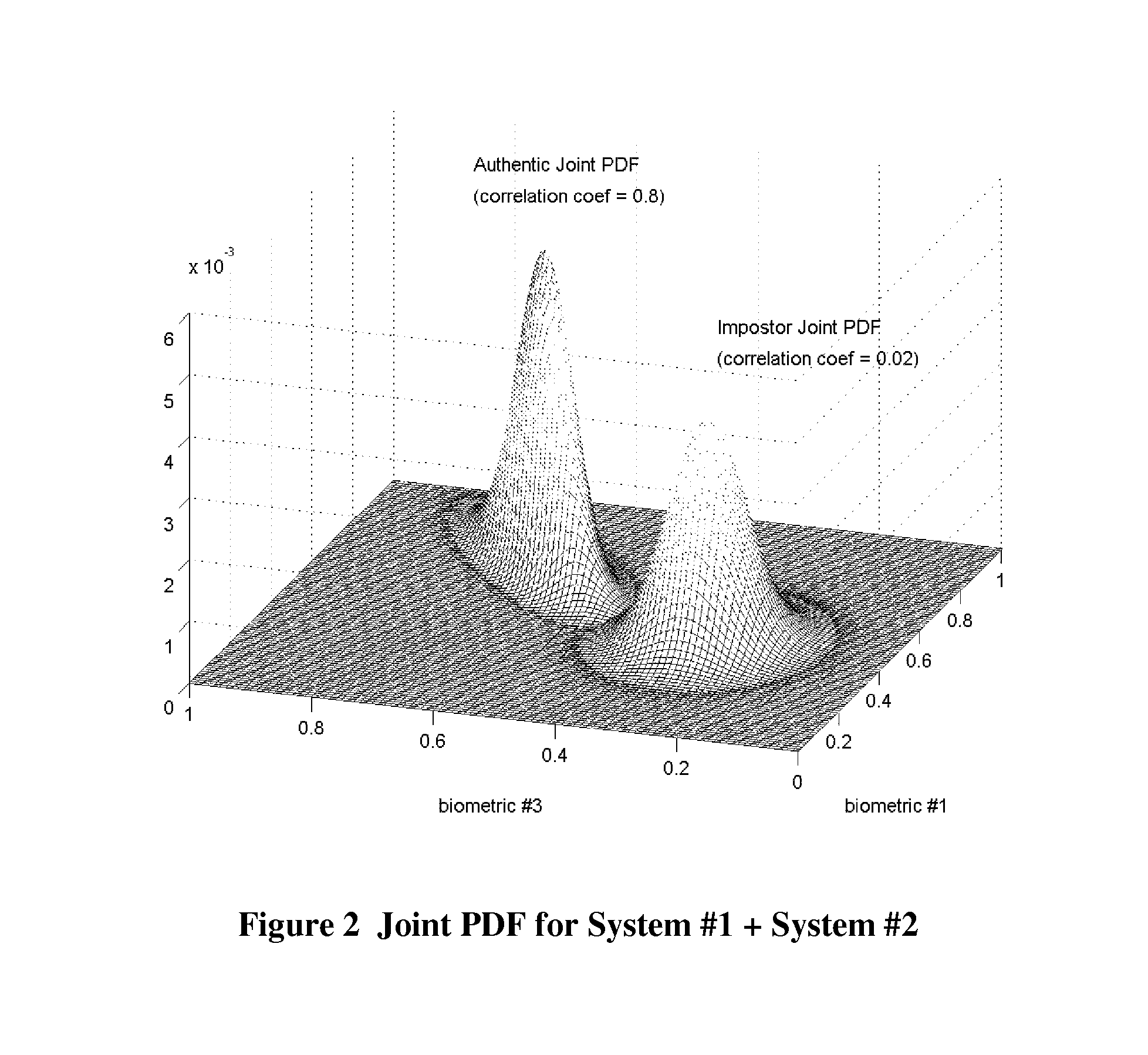Multimodal fusion decision logic system for determining whether to accept a specimen
a decision logic and multimodal technology, applied in the field of multimodal fusion decision logic system for determining whether to accept specimens, can solve the problems of not very secure forms of identification, and affecting the deployment of biometric identification systems
- Summary
- Abstract
- Description
- Claims
- Application Information
AI Technical Summary
Benefits of technology
Problems solved by technology
Method used
Image
Examples
Embodiment Construction
[0073]Preliminary Considerations: To facilitate discussion of the invention it may be beneficial to establish some terminology and a mathematical framework. Biometric fusion may be viewed as an endeavor in statistical decision theory [1] [2]; namely, the testing of simple hypotheses. This disclosure uses the term simple hypothesis as used in standard statistical theory: the parameter of the hypothesis is stated exactly. The hypotheses that a biometric score “is authentic” or “is from an impostor” are both simple hypotheses.
[0074]In a match attempt, the N-scores reported from NN (Euclidean N-space) is the score sample space, is a vector function of a random variable X from which is observed a random sample (X1, X2, . . . , XN). The distribution of scores is provided by the joint class-conditional probability density function (“pdf”):
f(x|θ)=f(x1,x2, . . . , xN |θ) (1)
where θ equals either Au to denote the distribution of authentic scores or Im to denote the distribution of impostor s...
PUM
 Login to View More
Login to View More Abstract
Description
Claims
Application Information
 Login to View More
Login to View More - R&D
- Intellectual Property
- Life Sciences
- Materials
- Tech Scout
- Unparalleled Data Quality
- Higher Quality Content
- 60% Fewer Hallucinations
Browse by: Latest US Patents, China's latest patents, Technical Efficacy Thesaurus, Application Domain, Technology Topic, Popular Technical Reports.
© 2025 PatSnap. All rights reserved.Legal|Privacy policy|Modern Slavery Act Transparency Statement|Sitemap|About US| Contact US: help@patsnap.com



